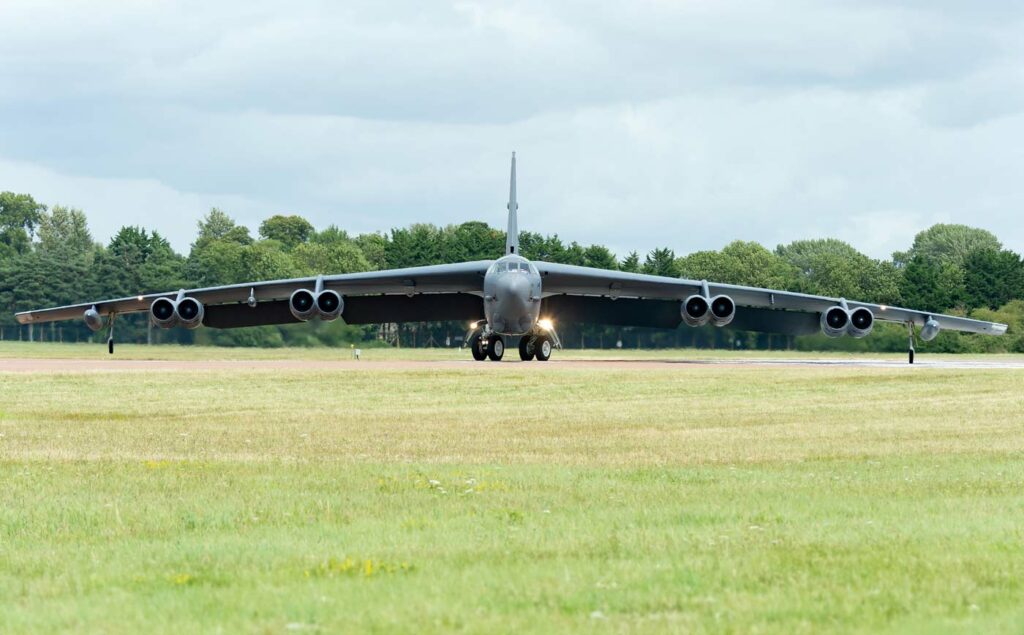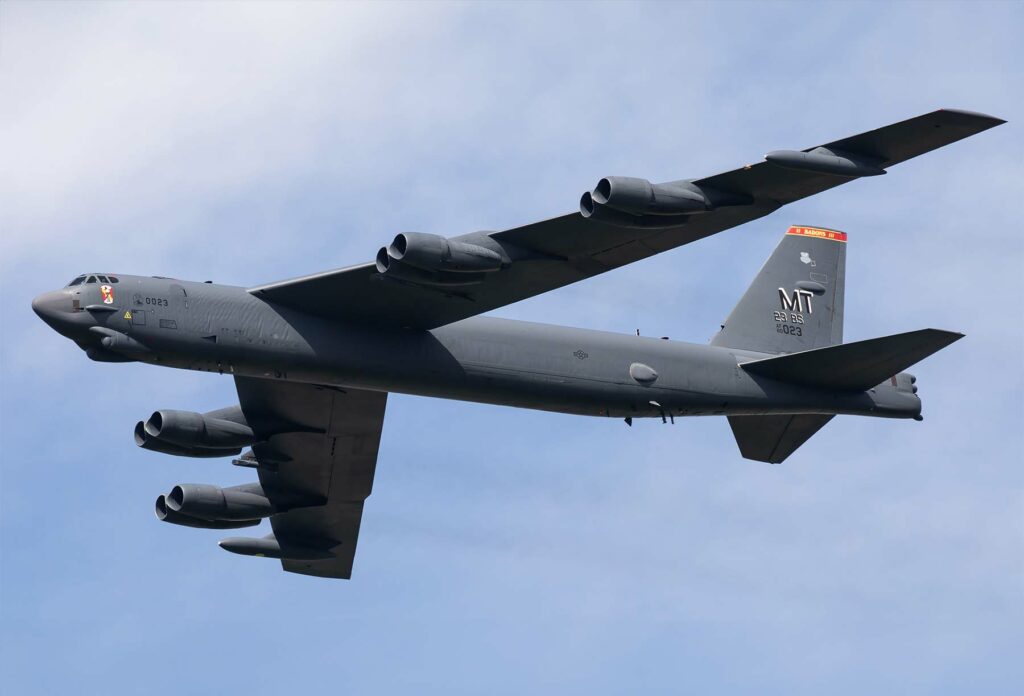The B-52 Stratofortress, a long-range, subsonic, jet-powered strategic bomber, is renowned for its formidable payload capacity and endurance.
In brief
The Boeing B-52 Stratofortress is a symbol of American air power, renowned for its long-range bombing capabilities and versatility. Introduced in the 1950s, it has been a cornerstone of the United States Air Force’s strategic bomber fleet for decades. The B-52 is characterized by its impressive size, range, and payload capacity, capable of delivering a wide range of munitions, including nuclear weapons. It has undergone numerous upgrades to remain effective in modern warfare, proving its adaptability and resilience. The B-52’s iconic status is underpinned by its longevity and effectiveness in various conflicts, from the Cold War to contemporary engagements.
The Boeing B-52 Stratofortress is a legendary aircraft in military aviation history, serving as a backbone of American strategic bombing capabilities for over half a century.

History of Development
The development of the Boeing B-52 Stratofortress began in the early Cold War era, a time when the United States sought to bolster its strategic bombing capabilities against the backdrop of escalating tensions with the Soviet Union. The U.S. Air Force needed a powerful bomber that could reach any part of the globe, a requirement that led to the creation of the B-52.
Boeing’s design was selected, and the development program officially commenced. The B-52 first flew on April 15, 1952, marking a significant milestone in aviation history. The aircraft was designed to carry nuclear and conventional weapons, reflecting the strategic doctrines of the time. Its development was driven by the need for a bomber that could penetrate Soviet airspace and deliver a crippling blow if necessary, a concept rooted in the strategy of deterrence.
Design
The Boeing B-52 Stratofortress is notable for its distinctive design, featuring eight turbofan engines, a wingspan of 185 feet (56.4 meters), and a length of 159 feet (48.5 meters). Its swept-wing design and underwing engine placement are key characteristics. The B-52 can carry up to 70,000 pounds (31,750 kilograms) of weapons, including nuclear bombs, cruise missiles, and precision-guided munitions.
The design has evolved over the years, with upgrades to avionics, armaments, and engines. These changes have maintained the B-52’s relevance in modern warfare. However, the aircraft’s size and aging airframe have presented maintenance and operational challenges.
Performance
The performance of the B-52 Stratofortress is characterized by its long-range and high payload capacity. It is powered by eight Pratt & Whitney TF33-P-3/103 turbofan engines, each delivering 17,000 pounds of thrust. The bomber has a top speed of 650 mph (1,046 km/h) and a range of 8,800 miles (14,162 kilometers) without aerial refueling.
Compared to contemporary bombers, the B-52’s endurance and payload capacity make it a formidable platform. Its ability to carry a wide array of weapons, coupled with its extensive range, allows it to undertake missions that few other aircraft can.
Variants
The B-52 has seen multiple variants since its inception, each tailored to specific operational needs. These include the B-52A through B-52H models, with improvements in avionics, armaments, and engine performance. The B-52H, the latest and most advanced variant, features upgraded electronics, communication systems, and reduced radar signature.

Military Use and Combat
The B-52 Stratofortress has played a significant role in various conflicts, including the Vietnam War, the Gulf War, and operations in Afghanistan and Iraq. Its ability to deliver a vast array of munitions has made it a versatile tool in the U.S. military’s arsenal. The aircraft has been involved in strategic bombing campaigns, close air support missions, and maritime patrols.
Throughout its service, the B-52 has faced various competing aircraft, such as the Soviet Tu-95, but has remained in service due to its adaptability and upgrades. The bomber has not been sold to other countries, reflecting its strategic importance to the United States.
The Boeing B-52 Stratofortress is more than just an aircraft; it’s a testament to engineering ingenuity and strategic foresight. Its continued service in the U.S. Air Force, despite the emergence of newer technology, underscores its unmatched capabilities and the pivotal role it plays in national defense and global stability. As it continues to receive updates and upgrades, the B-52 stands as a symbol of enduring strength and resilience in military aviation.
Back to the Bombers section.